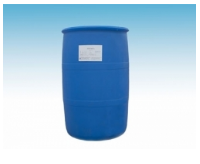The adsorption of chemical surfactants on soil is stronger than that of biosurfactants, so biosurfactants can effectively transfer the oil in soil, and biosurfactants are easy to be biodegraded by indigenous microorganisms in the process of remediation of oil contaminated soil in situ. Chinese style
In the process of bioremediation promoted by surfactants, different types of surfactants will get different results due to their different characteristics, and if the critical micelle concentration is not reached, there will be no solubilization of surfactants, and if the concentration is too large, it may inhibit the microbial degradation. Therefore, the best type and concentration of surfactant should be used in the practical remediation of soil. Chinese style
Most of the new generation fabric softeners are compounds containing ester or amido or hydroxyl groups, which are easy to be decomposed into C18, C16 fatty acids and smaller cationic metabolites by microorganisms, with little damage to the environment.

In recent years, polyamine cationic surfactants have also been used in fabric softeners, especially low molecular weight linear polyamines and recyclable polyamines, which make the fabric softer after treatment and reduce the damage to the fabric. High performance polysiloxane softeners can reduce the friction coefficient, improve the resilience, reduce the rigidity of the bond, the lag effect of bending and the shear resistance of the fiber, which can give the textile luxury softness. In addition, it can also reduce the energy loss of fiber during shearing. The main representative products are amino polysiloxane crude emulsion and microemulsion.
Long chain amines are generally used as corrosion inhibitors for metals in acid medium. For example, cetylpyridinium chloride is a tertiary amine, which can be used as corrosion inhibitors for zinc in 0.5mol/l hydrochloric acid solution.
The non-ionic surfactant sorbitol fatty acid ester and the polyoxyethylene derivative of sorbitol fatty acid ester can be used as corrosion inhibitor of steel in water system. Alkylphenol polyoxyethylene ether can be used as corrosion inhibitor of steel when combined with alkali metal borate and molybdate nitric acid. One or several mixtures of nonylphenol polyoxyethylene ether and polyoxyethylene amine can be used as corrosion inhibitor of metal pores in oil field water injection wells after compounding with cyclic quaternary ammonium salt and alkynol.